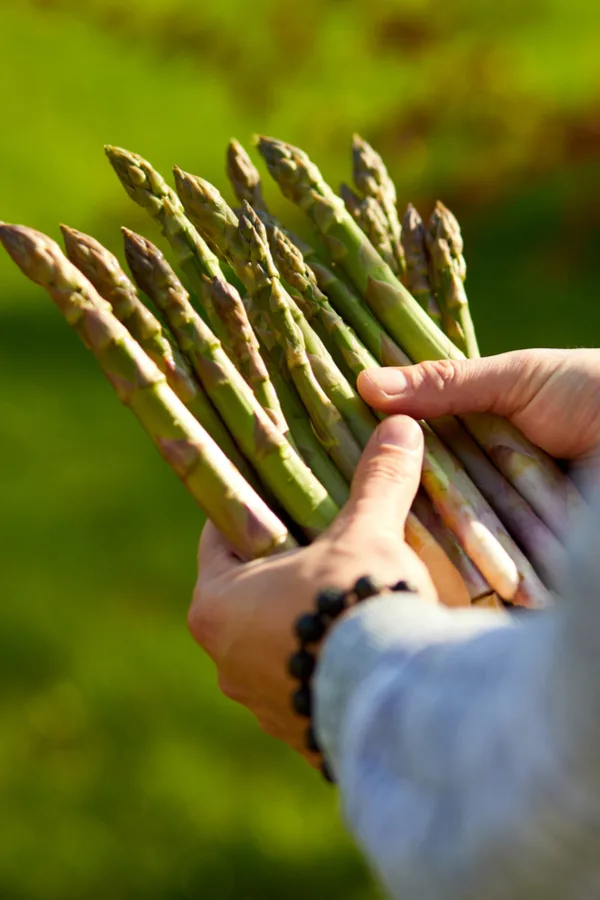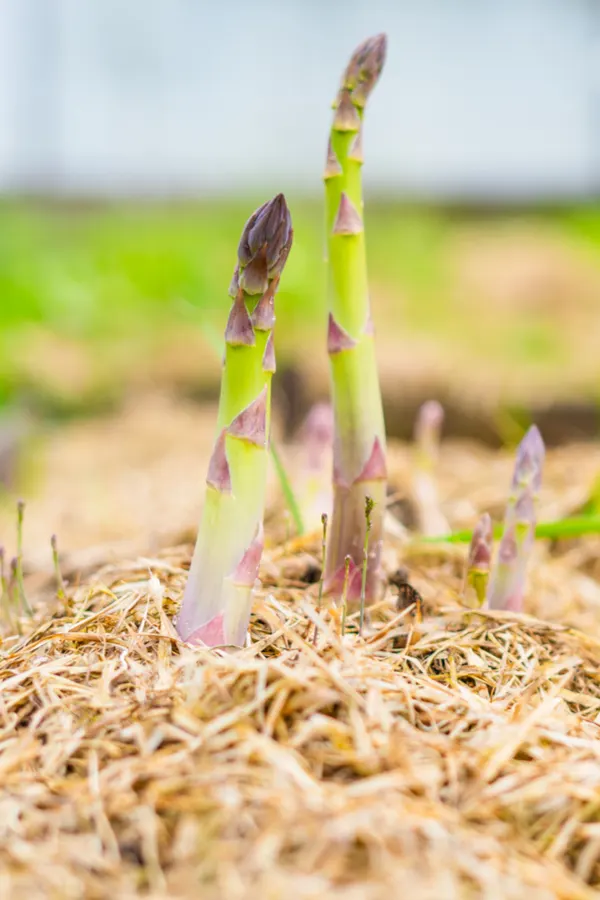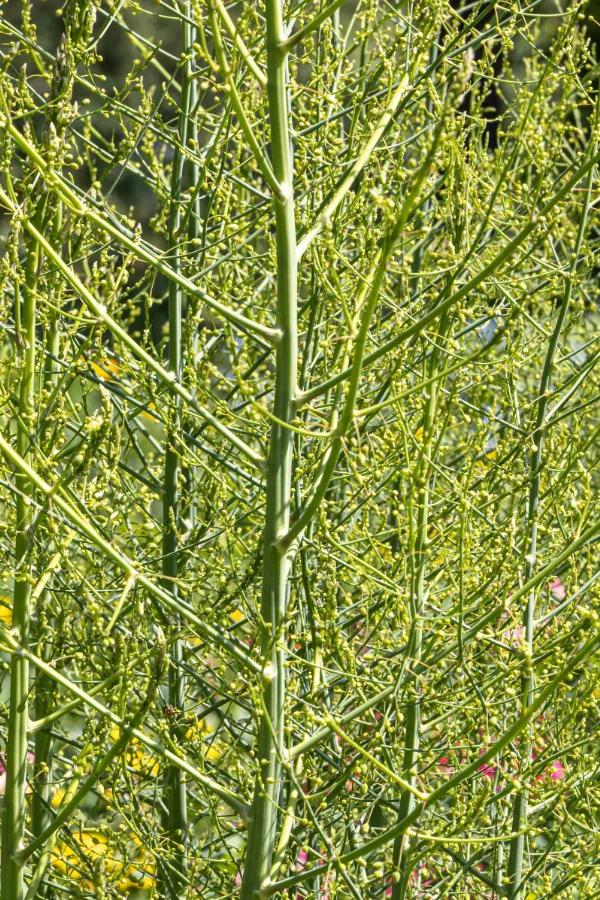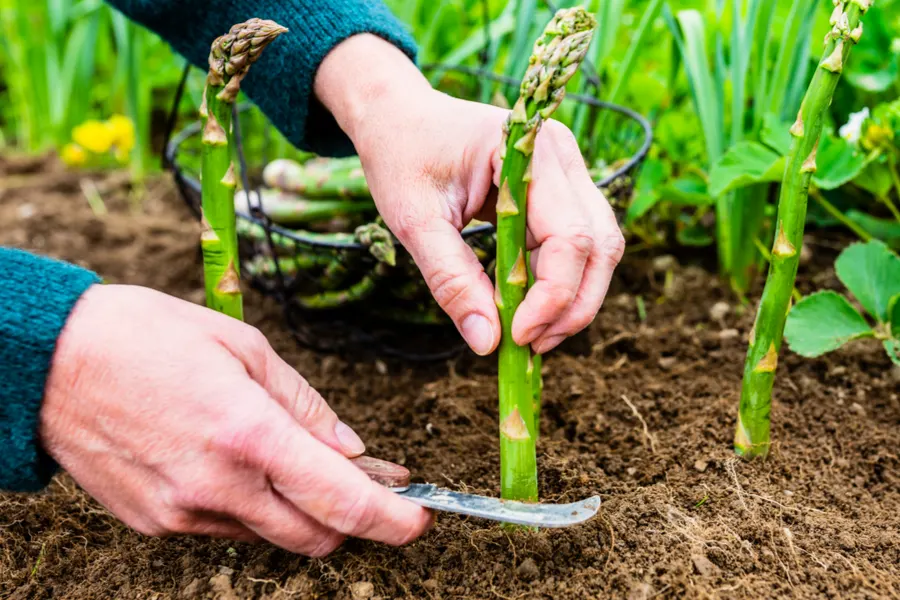Did you know that how and when you harvest an asparagus crop can play a huge role in not only the shelf life of the harvested spears, but in how much the asparagus plants will produce? Even more, it can also affect the health and production levels of next year’s crop as well!
Asparagus has become more popular than ever in recent years as a backyard garden crop. It’s certainly easy to see why. The tasty vegetable is loaded with nutrients and is both fat and cholesterol free.
Making it even more valuable as a vegetable to grow in your garden, asparagus has the advantage of being a perennial crop. With one simple planting, a gardener can be rewarded with fresh spears season after season.

Unlike most annual vegetable plants, the roots or crowns of asparagus are winter hardy. With the most basic care and attention, an asparagus planting can produce fresh spears for 10+ years. In fact, some asparagus crowns will even continue producing for 20 years or more!
How To Best Harvest Asparagus
Although asparagus plants can last for many years, their health, vitality and production levels are greatly impacted during their lifespan by three key factors:
- Good Soil
- Maintaining Weed Free Beds
- Good Harvesting Habits
Surprisingly, as you will see below, as important as good soil and weed free beds are to an asparagus crop’s health and vitality, how, when and for how long you harvest each year can actually make the most difference of all.
With that in mind, here is a look at each of the 3 keys, including why harvesting correctly plays the most important part in success. We will also cover how to best harvest your crop for the freshest spears possible, and to keep your crop healthier year in and year out.
The Three Big Keys To A Big Asparagus Harvest – How To Best Harvest Asparagus
#1. The Soil
For starters, good soil is a must for growing asparagus. Asparagus requires fertile and loose soil to grow strong crowns and produce large spears. The nutrients feed the crowns for better health, and the loose soil helps spears form and grow easily.
Check out our Podcast on How To Grow Great Asparagus!
That is exactly why adding compost as a mulch to your asparagus beds each year is important. A light mulching of compost in the fall can help recharge the soil. Another in early spring will then help feed the spears again just before they begin to sprout.
As it decomposes. the compost also helps loosen the soil. That, in turn, creates a soil which drains more easily, keeping the asparagus crowns (roots) safe from rot and disease.
#2. Keeping Your Asparagus Weed Free
Secondly, it is also extremely important to keep your crop weed free. Not just in the early spring during prime harvest time, but for the remainder of the summer and early fall as well.
Many gardeners forget about their asparagus once harvesting is over. But when weeds are allowed to grow freely in asparagus beds after a harvest, they begin to steal and deplete nutrients from the soil.
Unfortunately, that results in asparagus being unable to store the energy needed for good crop production for the following season.
For the best possible harvest, keep your asparagus beds covered with a thick, three to four inch organic mulch. Straw, shredded leaves or grass clippings all are excellent choices. Not only will they help suppress weeds, they also add nutrients to the soil as they break down. (How To Select The Best Mulch For Gardens & Flowerbeds)

#3 Harvesting Right! – How To Best Harvest Asparagus
Now it is time to take a look at the third and final key – proper harvesting of your asparagus crop. And is it ever an important one!
Believe it or not, when and for how long you harvest your asparagus can have a huge impact on its performance and long term health and vitality. Even more, how you harvest can also play a major role in just how long your spears will stay fresh!
When To Harvest
Knowing when to start harvesting each season depends first on how old your asparagus crowns are. Although it can be hard to be patient for gardeners, young plants that are one to two years old should be rarely if ever harvested.

In fact, one of the biggest mistakes asparagus growers make for their crop’s long term health and production is to harvest spears in the first few years. If you want to taste a single spear or two, that’s fine. But allow the rest of the crop to grow freely.
This allows the asparagus crowns to develop incredible strength below the soil. And the more strength and vitality that can be stored in the crowns, the more the asparagus will produce in the coming years. Plain and simple – if you harvest young plants, they never get the chance to build strong root structures.
How To Harvest – Snapping vs. Cutting
So now that we have covered the when of harvesting, it’s time to cover the how. Did you know that how you harvest your spears will actually make a difference in how long they stay crisp and fresh?
When it comes to asparagus, there are two main methods for harvesting, snapping and cutting. Let’s first cover snapping. By simply snapping the stalk near its base with your fingers, the asparagus will usually break off where it is most tender.
Although this method works and is the more popular choice for harvesting, it does have a few drawbacks. First, by snapping, you run the risk of pulling up the crown or nearby spears if it’s not a clean snap. But even more importantly, snapping reduces the length of freshness for the spears.
How so? The snapping process actually bruises the ends of the spear. That results in the asparagus spear cells breaking down faster, resulting in less flavor and crispness over time. Obviously, if you are snapping and eating, you will not notice it at all. But if storing for a few days, it will make a difference.

Cutting Asparagus – How To Best Harvest Asparagus
The best method for harvesting asparagus is to cut the spears off right at or slightly below the soil line with a sharp knife or a pair of harvesting scissors.
By cutting instead of snapping, it makes for a smooth, clean cut both for the spear and the crown. For the spear, it means less bruising which will extend its shelf life. But this type of cut also helps the crown and the asparagus plant. A clean cut requires less plant energy to heal, meaning more resources for producing more spears and storing more energy for next year’s crop.
When To Stop Harvesting
Finally, knowing when to stop harvesting your asparagus crop is critical in helping next year’s crop to develop.
You can harvest spears from early spring to about mid June in most locations. In some cooler climates, you may be able to harvest until the end of June, but to allow the asparagus to begin storing energy for next year’s spears, never harvest after July 1st.
In general, you only want to harvest spears that are larger in circumference than a standard pencil. When the spears begin to grow less frequently and with less strength and size, it is time to stop harvesting.
Once harvesting stops, allow the spears to grow into tall ferns for the summer. This will help them begin to store energy below in their crowns for next year. Once they die off in the fall, simply cut them back and mulch over. (See: How To Care For Asparagus Plants In The Summer & Fall)
Here is to getting the most out of your asparagus crop this year – and for years to come!
Follow Our Facebook Page For Great Gardening Tips And Advice! This Is My Garden Facebook Page
This Is My Garden is a garden website created by gardeners, for gardeners. Jim and Mary Competti have been writing gardening, DIY and recipe articles and books and speaking for over 15 years from their 46 acre Ohio farm. They publish three articles every week, 52 weeks a year. Sign up today to follow via email, or follow along!
